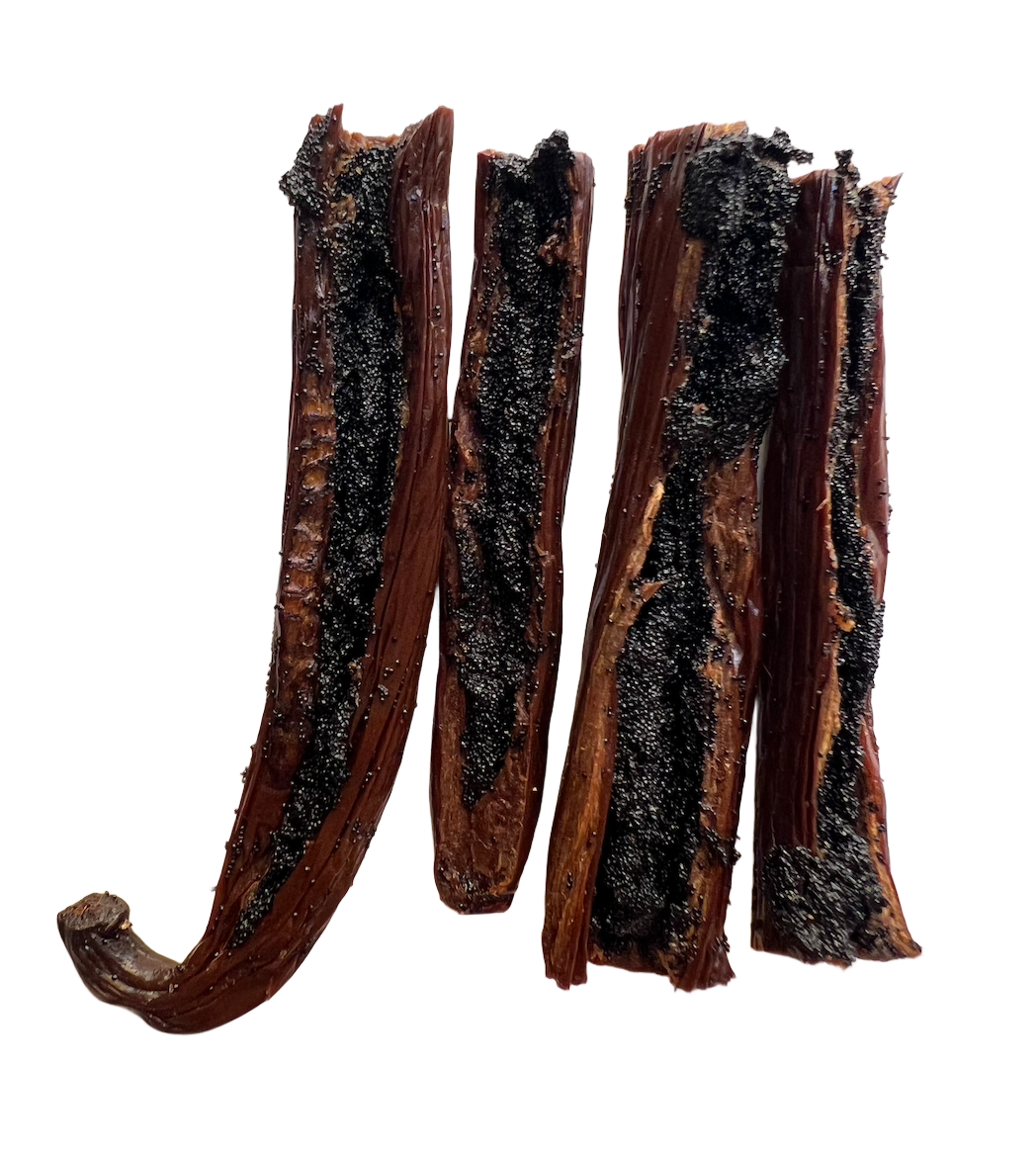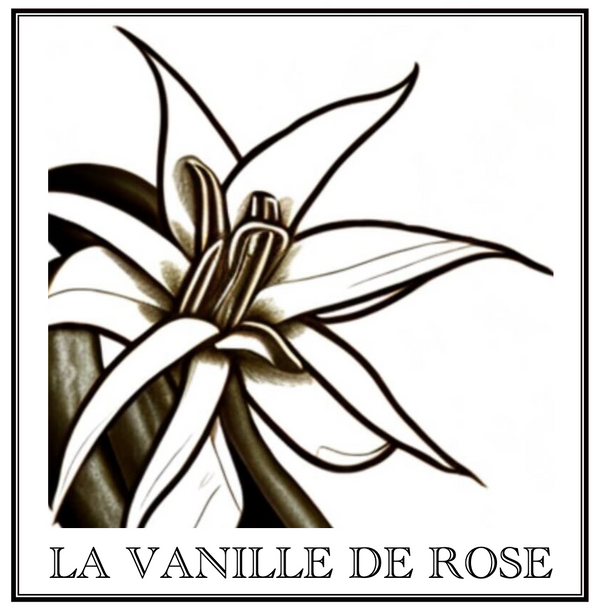
Which Vanilla to Choose?
The quality of vanilla pods varies depending on their treatment. Careful cultivation is essential to ensure superior-quality vanilla, especially mastering pollination and harvesting the pods at maturity. The drying process, which involves one hour in the sun followed by one hour in the shade over four months, causes each pod to react differently. Some become drier than others. Sorting and packaging are crucial to assess their quality. While the origin does not determine quality, it depends on the moisture content and vanillin concentration. There are four global classifications: Gourmet, TK, Red EU, and Red US, with distinctions between Grade A vanilla (intact and aesthetically pleasing pods) and Grade B vanilla (brown and less attractive). However, there is no official standard, and these terms are used arbitrarily.

GOURMET
The superiority of black vanilla, also known as gourmet vanilla, stands out. It represents exceptional quality, characterized by pods with a deep black color that express its richness. Black vanilla is distinguished by its high moisture content, giving it a fleshy and pulpy texture. Bourbon-type black vanilla is the most expensive. It is sought after by renowned chefs, pastry chefs, artisans, as well as chocolate and ice cream manufacturers. With a deep chocolate-black hue, it is free of defects. The aromatic qualities, derived from its complex fragrance, make it an enticing and captivating option for skilled chefs.
💧 Moisture: 30-38%
🌱 Vanillin: 1.6%-2.2%
📏 Length: 16-22 cm

TK
The quality of TK vanilla, also known as T4 or Tekka, is renowned for its quality and aromatic intensity. Unlike gourmet black vanilla, its moisture content is lower, ranging from 25% to 30%, making it more concentrated in aromas and more stable for storage. Displaying brown to reddish hues, it is also known as brown vanilla. This unique profile results from a prolonged maturation process, which further concentrates its flavors. TK vanilla is particularly valued for its powerful aromatic properties and its ability to last longer, making it a preferred choice for the industry and artisans seeking a durable and superior quality vanilla.
💧 Moisture: 25-30%
🌱 Vanillin: 1.6%-2.2%
📏 Length: 16-22 cm

RED EU & RED US
The Red Vanilla EU is intended for industrial players in the European market who have a particular interest in scarlet vanilla with a high vanillin content. The Red Vanilla EU type has a moisture content ranging from 20% to 25%, sometimes even exceeding 27%. It features distinctive streaks on its pods, setting it apart from all other varieties. The superiority of this vanilla is unquestionable compared to the Red Vanilla US. Its color tends toward burgundy.
💧 Moisture: 20-25%
🌱 Vanillin: 1.2%-2.2%
📏 Length: 11-20 cm
The Red Vanilla US is intended for industrial players in the North American market, who accept a lower-quality product. In fact, like the variety destined for the old continent, this one has a moisture content of less than 20%, allowing for a larger quantity of material per kilogram. Its color tends toward a woody red.
💧 Moisture: 20%
🌱 Vanillin: 1.2%-2.2%
📏 Length: 11-20 cm

CAVIAR
Vanilla Caviar, renowned for its exceptional aromatic intensity, is considered the pinnacle of vanilla products. It is highly prized by chefs for its intense and precise flavor, often surpassing that of whole vanilla pods. Made from a carefully crafted blend of natural vanilla seeds, pulp, and a potent concentrate, Bourbon Vanilla Caviar is directly extracted from gourmet quality vanilla pods from Madagascar. Each pod is carefully slit and scraped to extract the concentrated core of all the characteristic flavors of Bourbon vanilla, creating a thick 100% vanilla paste, free of sugar, alcohol, and gluten. The black and glossy vanilla seeds give it the appearance of caviar. With the equivalent of 100 vanilla pods in a 100g jar, vanilla caviar offers a substantial saving compared to the price of whole pods.
💧 Moisture: 10-15%
🌱 Vanillin: 1.6%-2.4%

CUT
Cut Vanilla is a term used to describe one of the classifications of Madagascar vanilla. It can come in two distinct forms: as pieces or fragments of vanilla pods, or as pods that do not exceed 12 cm in length. This quality results from a selection process (damaged, twisted, or irregular pods) or from vanilla harvested before the pods have fully matured. Due to its imperfections, this vanilla is classified as "Grade C," which means it is priced lower. Its use is primarily industrial, and it is regularly used as raw material for vanilla powder. With a moisture content ranging from 15% to 20% and a relatively low vanillin content (0.5% to 1.7%), it still exudes a fruity and intense aroma.
💧 Moisture: 10-15%
🌱 Vanillin: 0.5%-1.7%

POWDER
Vanilla Powder is made from a whole dehydrated vanilla pod, which is then ground into powder. While this powder is less aromatic than caviar, it remains a quality product that is easy to use and offers excellent value for money. Its practicality makes it a favored ingredient for chefs who wish to combine simplicity with aromatic intensity. However, it's important to choose your vanilla powder carefully, as some may not always be pure.
💧 Moisture: 10-15%
🌱 Vanillin: 1.2%-1.7%
